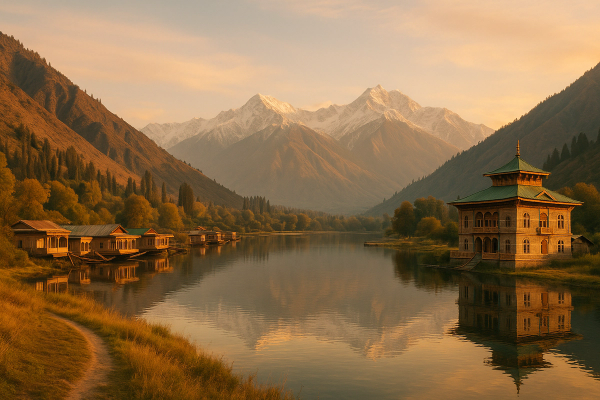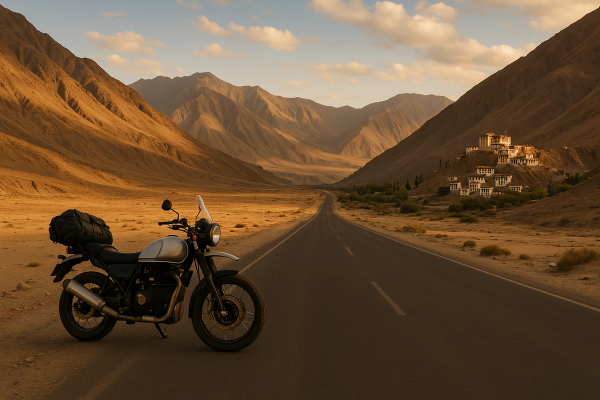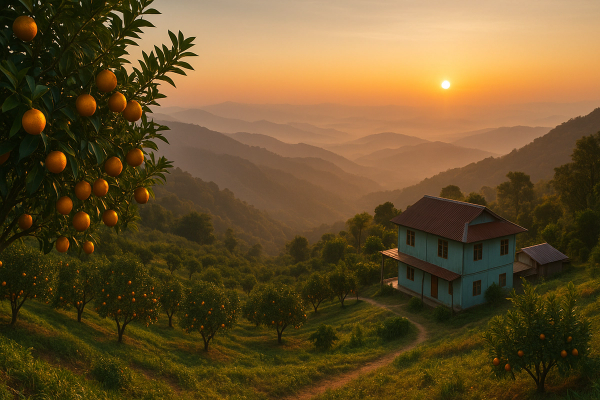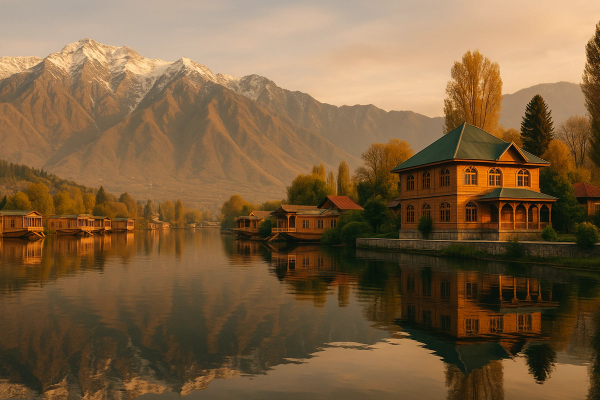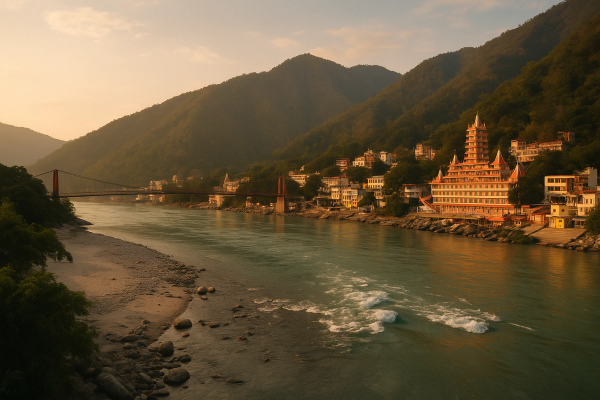Under the Desert Sky: Your Ultimate Joshua Tree Weekend Guide to the Best Hikes & Stargazing#
Imagine a landscape sculpted by wind and time, where fantastical rock formations rise from the desert floor and strange, bristly trees reach towards an impossibly vast sky. This is Joshua Tree National Park, a place where the Mojave and Colorado Deserts converge, creating an ecosystem unlike any other. It's a sanctuary for adventurers, artists, and dreamers. If you're craving a weekend escape filled with soul-stirring hikes and some of the most breathtaking stargazing imaginable, you've come to the right place. This Joshua Tree weekend guide is your key to unlocking the magic, focusing on the best hikes and stargazing experiences this unique US National Park offers.¶
Whether you're a seasoned hiker, a budding astronomer, or simply a nature lover seeking solace and beauty, Joshua Tree promises an unforgettable adventure. Prepare to disconnect, explore otherworldly terrain, and witness a celestial display that will leave you speechless.¶
Joshua Tree: Where Two Deserts Kiss#
What makes Joshua Tree so special? It sits at the ecological crossroads of two distinct desert environments. The higher, cooler, wetter Mojave Desert is the iconic habitat of the park's namesake, the Yucca brevifolia or Joshua tree, alongside dramatic granite monoliths and rock piles perfect for scrambling. The lower, hotter, drier Colorado Desert section features different flora like ocotillo and cholla cactus gardens. This diversity packed into one park makes for fascinating exploration.¶
It's a landscape that feels both ancient and alive, offering stark beauty, profound silence (broken only by the wind or a coyote's call), and a sense of raw, untamed wilderness just a few hours from major cities like Los Angeles and San Diego.¶
When to Visit: Timing Your Joshua Tree Adventure#
Choosing the right time for your Joshua Tree weekend getaway is crucial for comfort and enjoyment. The desert climate has dramatic seasonal shifts.¶
Spring (March - May) & Fall (October - November): The Sweet Spot#
These are widely considered the best times to visit Joshua Tree. Daytime temperatures are pleasant (typically 60-85°F / 15-30°C), perfect for hiking. Nights are cool, ideal for camping and stargazing. Spring often brings stunning wildflower blooms (usually peaking in March/April, depending on winter rains), adding vibrant splashes of colour to the desert palette.¶
- Pro: Ideal weather for hiking and exploring all day.
- Pro: Potential for spectacular wildflower displays in spring.
- Con: These are the most popular seasons, meaning potentially crowded trails and booked-out campgrounds. Plan and book accommodation/campsites months in advance.
Winter (December - February)#
Winter offers crisp, clear days (often 40-60°F / 4-15°C) and cold nights (sometimes dipping below freezing). Snow is possible at higher elevations. It's less crowded than the shoulder seasons, and the stark winter light can be beautiful for photography.¶
- Pro: Fewer crowds, clear air for potentially excellent stargazing.
- Con: Cold temperatures, especially at night. Requires warm camping gear and layers for hiking. Some ranger programs might be limited.
Summer (June - September)#
Frankly, summer in Joshua Tree can be dangerously hot, with daytime temperatures frequently soaring above 100°F (38°C). Hiking is strongly discouraged during midday hours. If you must visit in summer, plan activities for early morning or late evening.¶
Safety Warning: Summer heat is intense and potentially life-threatening. Limit strenuous activity, carry excessive amounts of water (at least 1 gallon/4 liters per person per day), and know the signs of heatstroke. Stargazing is still possible, but daytime exploration is severely limited.
- Pro: Least crowded time, nights are warm for stargazing (though sometimes hazy).
- Con: Extreme heat restricts daytime activities. Risk of dehydration and heat illness is high.
Getting There & Navigating the Park#
Reaching Joshua Tree is relatively straightforward, but you'll definitely need a vehicle to explore the park effectively.¶
By Air#
- Palm Springs International Airport (PSP): The closest airport, about a 50-minute drive to the West Entrance in the town of Joshua Tree. Offers connections from many major US cities.
- Ontario International Airport (ONT): Roughly a 1.5 to 2-hour drive.
- Los Angeles International Airport (LAX): About a 2.5 to 3.5-hour drive, depending heavily on traffic. Often has more flight options and potentially lower fares.
- Las Vegas McCarran International Airport (LAS): Around a 3 to 3.5-hour drive to the North Entrance near Twentynine Palms.
By Car#
A car is essential. Rental cars are available at all major airports. The park has three main entrances:¶
- West Entrance (Joshua Tree Village): Most popular, near services, accesses the main western section.
- North Entrance (Twentynine Palms): Also accesses popular areas, near Oasis Visitor Center.
- South Entrance (near Cottonwood Spring): Less busy, accesses the lower Colorado Desert portion, further from the main attractions.
Park entrance fees apply (currently $30 per vehicle for 7 days, check the official NPS website for the latest fees and pass options like the America the Beautiful Pass).¶
Getting Around Inside the Park#
You'll be driving between trailheads, viewpoints, and campgrounds. Roads are paved but can be narrow and winding in places. Be mindful of wildlife, especially at dawn and dusk. Critically, there is very limited to no cell service within most of Joshua Tree National Park.¶
Essential Tip: Download offline maps (Google Maps offline feature, park maps from the NPS app, or dedicated hiking apps like AllTrails Pro) before you enter the park. Carry a physical park map as a backup – pick one up at the entrance station or visitor center.
Where to Stay: Camping Under the Stars & Cozy Desert Hideaways#
Accommodation ranges from basic campgrounds to unique vacation rentals. Booking well in advance is highly recommended, especially for weekends and peak seasons.¶
Camping Inside the Park#
Camping is the quintessential Joshua Tree experience, putting you right amidst the landscape for unparalleled stargazing. Most campgrounds require reservations made up to 6 months in advance via Recreation.gov.¶
- Jumbo Rocks Campground: Centrally located, iconic rock formations, reservable. Popular and scenic.
- Black Rock Canyon Campground: Near Yucca Valley (outside the main park road loop), offers water and flush toilets, reservable. Good for slightly easier access to town.
- Indian Cove Campground: Set amongst giant boulders, great for rock climbers, reservable. Requires separate entrance.
- Hidden Valley Campground: First-come, first-served. Extremely popular and fills up very early, especially on weekends. Requires arriving early (often Thursday or early Friday) to snag a spot.
- Ryan Campground: Smaller, centrally located, reservable.
Most park campgrounds are primitive (pit toilets, no water except Black Rock and Cottonwood). You must bring your own water and firewood (check fire restrictions).¶
Accommodation Outside the Park#
If camping isn't your style, the nearby towns offer plenty of options:¶
- Joshua Tree Town: Quirky motels, unique Airbnb rentals, guesthouses. Offers the closest access to the West Entrance and a bohemian vibe.
- Yucca Valley: Larger town with more standard hotels, motels, restaurants, and supermarkets.
- Twentynine Palms: Offers hotels and motels, close to the North Entrance and the Oasis Visitor Center.
| Content |
|---|
A Perfect Joshua Tree Weekend Itinerary: Hikes & Stargazing Highlights#
This suggested itinerary balances popular spots with time for relaxation and soaking in the desert atmosphere. It focuses on easy to moderate hikes and prime stargazing opportunities.¶
Day 1: Arrival, Rock Scrambling & Sunset Views#
- Afternoon (Arrival & Setup): Arrive at the park (aim for early afternoon), pay entrance fees, grab a map. Check into your accommodation or set up camp. Remember to bring ample water from the start!
- Late Afternoon (Easy Hike - Skull Rock): Head to the Skull Rock Nature Trail (approx. 1.7 miles / 2.7 km loop, easy). This is a fantastic introduction to the park's geology. The trail winds through jumbled boulders, washes, and, of course, the famous skull-shaped rock itself. It’s relatively flat and great for families. Allow 1-1.5 hours.
Alternative Easy Hike: The Discovery Trail (0.7 miles / 1.1 km loop) near the West Entrance is another short, accessible option connecting viewpoints.¶
- Evening (Sunset at Keys View): Drive up to Keys View about 30-45 minutes before sunset. This viewpoint offers arguably the most expansive panoramic vista in the park, looking out over the Coachella Valley, the San Andreas Fault, and surrounding mountains. The colours at sunset can be absolutely breathtaking. It gets windy and cooler up here, so bring layers!
- Night (Dinner & Stargazing Prep): Head back to your campsite for a campfire dinner or drive into one of the nearby towns for a meal. As darkness falls, prepare for the main event.
- Stargazing Session 1: Find a spot away from main roads and campground lights. Pullouts along Pinto Basin Road, Geology Tour Road (check conditions), or designated spots like Cap Rock are excellent choices. Allow your eyes at least 20 minutes to adjust to the darkness. Download a stargazing app beforehand (like SkyView Lite or Star Walk 2) to help identify constellations and planets. Look for the Milky Way stretching across the sky on moonless nights – it's truly awe-inspiring.
Day 2: Moderate Hike, Desert Oasis & Departure#
- Morning (Moderate Hike - Barker Dam or Ryan Mountain): Start your hike early to avoid the midday heat. Choose one:
- Barker Dam Nature Trail (approx. 1.1 miles / 1.8 km loop, easy to moderate): A relatively flat loop leading to a historic dam (water level varies seasonally) and past petroglyphs (please view respectfully from a distance). Offers a different perspective with potential water attracting wildlife. Allow 1 hour.
- Ryan Mountain Trail (approx. 3 miles / 4.8 km round trip, moderate): This is more strenuous, involving a steady climb (about 1000 ft / 300m elevation gain) to the summit. Your reward? Incredible 360-degree views of the heart of the park. It's exposed, so bring sun protection and plenty of water. Allow 2-3 hours.
- Late Morning (Explore More Rocks): Visit Hidden Valley. Legend says cattle rustlers used this area, enclosed by massive boulders, to hide their stolen herds. There's an easy 1-mile loop trail perfect for exploring the unique rock formations.
- Lunch: Enjoy a picnic lunch amidst the boulders or head back towards town.
- Afternoon (Optional - Cholla Cactus Garden): If time permits before heading out (and depending on which exit you use), consider driving to the Cholla Cactus Garden located in the Colorado Desert section of the park. It's a unique concentration of 'teddy bear' cholla. Be very careful – the spines jump easily and are painful to remove! Stay on the designated path.
- Departure: Pack up, check out, and begin your journey home, filled with desert memories.
Spotlight: Best Joshua Tree Stargazing Spots & Tips#
Joshua Tree National Park is an official International Dark Sky Park, recognized for its exceptional starry nights. Light pollution is minimal, especially deep within the park.¶
Why is Stargazing Here So Good?#
- Dark Skies: Low humidity and distance from major urban centers result in incredibly dark skies.
- High Elevation: Parts of the park are at higher elevations, offering clearer atmospheric conditions.
- Wide Open Spaces: Vast, unobstructed horizons provide panoramic views of the celestial sphere.
Top Stargazing Spots#
- Cap Rock: Easily accessible intersection with parking, known for its iconic lone Joshua Tree silhouetted against the stars (popular photography spot).
- Skull Rock Area: While the trailhead gets busy, find a pullout nearby along Park Boulevard for great views.
- Keys View: While famous for sunset, it also offers dark skies facing south, though car lights coming and going can be disruptive.
- Ryan Mountain Trailhead/Campground Area: Less light pollution than areas closer to entrances.
- Anywhere along Pinto Basin Road: Driving south towards Cottonwood Spring takes you deeper into the park and away from potential light domes.
Pro Tip: The best stargazing spot is often simply anywhere you can safely pull off the road, turn off your car lights, and let your eyes adjust. Avoid setting up right next to campgrounds where headlamps and campfires interfere.
Stargazing Tips for Success#
- Check the Moon Phase: For the darkest skies and best Milky Way viewing, plan your trip around the New Moon.
- Use Red Lights: If you need light, use a headlamp with a red-light setting. Red light preserves your night vision much better than white light.
- Bring Binoculars or a Telescope: Even basic binoculars can reveal stunning details of the Moon, planets, and star clusters.
- Dress Warmly: Desert nights get cold, even in warmer seasons. Bring layers, hats, and gloves.
- Patience is Key: Allow at least 20-30 minutes for your eyes to fully adapt to the darkness.
- Use Stargazing Apps: Apps like PhotoPills (for planning), SkyView Lite, Star Walk 2, or Stellarium help identify celestial objects.
Fueling Your Adventure: Food & Drink#
Options range from campfire cooking to eclectic restaurants in town.¶
- Pack Your Own: For hikes and lunches, packing sandwiches, trail mix, fruits, and plenty of snacks is easiest.
- Campfire Meals: If camping, plan easy-to-cook meals. Remember to bring all cookware, utensils, and water for cooking and cleaning.
- Town Grub: Joshua Tree town, Yucca Valley, and Twentynine Palms offer various options: classic diners, pizza joints, cafes, and some surprisingly hip eateries. Pappy + Harriet's Pioneertown Palace (in nearby Pioneertown) is legendary for BBQ and live music, but requires reservations far in advance.
Hydration is Non-Negotiable: I can't stress this enough. Bring more water than you think you need. There are very few water refill stations in the park (check the NPS website for current locations). Aim for at least 1 gallon (4 liters) per person per day, more if hiking strenuously.
Practical Tips for Your Joshua Tree Weekend#
A little preparation goes a long way in the desert.¶
Packing Essentials#
- Water: Bring plenty! Reusable water bottles/bladders are essential.
- Sun Protection: Wide-brimmed hat, sunglasses, high SPF sunscreen (apply generously and often).
- Layers: Temperatures can fluctuate drastically between day and night. Bring light layers for hiking, warm layers (fleece, insulated jacket) for evenings/stargazing.
- Sturdy Footwear: Broken-in hiking boots or trail shoes with good grip are recommended for trails.
- Navigation: Offline maps (digital and physical park map).
- First-Aid Kit: Include basics plus blister care, tweezers (for cactus spines!).
- Headlamp/Flashlight: Essential for navigating after dark, preferably with a red-light setting for stargazing.
- Portable Charger/Power Bank: Keep your phone (for photos/offline maps) and other devices charged.
- Camera: Capture the stunning landscapes and starry skies.
- Camping Gear (if applicable): Tent, sleeping bag rated for expected night temperatures, sleeping pad, camp chairs, cooking supplies.
Budget Considerations#
- Park Entrance Fee: $30 per vehicle (7 days) or use an America the Beautiful Pass ($80 annual).
- Camping: $15-$25 per night typically.
- Accommodation (Outside Park): $80-$300+ per night, depending on type and season.
- Food: Varies greatly. Budget $20-40/day for groceries/picnics, $50-$100+/day if eating out.
- Gas: Factor in driving to/from the park and within.
A budget weekend camping trip could be around $150-250 per person (excluding travel to the area), while staying in motels/Airbnbs and eating out might be $300-$600+ per person.¶
Safety First#
- Heat Safety: Avoid hiking midday in hot weather. Drink water constantly. Know heat exhaustion/stroke symptoms.
- Stay on Trails: Protect fragile desert soils and avoid getting lost.
- Wildlife: Observe from a distance. Never feed animals. Be aware of snakes and scorpions (shake out shoes/gear).
- Flash Floods: Be cautious in washes/canyons if rain is forecast.
Traveling Responsibly in the Desert#
Joshua Tree's ecosystem is beautiful but fragile. Practice Leave No Trace principles to minimize your impact:¶
- Plan Ahead & Prepare: Know regulations, weather, and bring adequate supplies.
- Travel & Camp on Durable Surfaces: Stay on marked trails and established campsites.
- Dispose of Waste Properly: Pack it in, pack it out. This includes everything – food scraps, toilet paper, etc.
- Leave What You Find: Resist the urge to take rocks, plants, or artifacts. Let others enjoy them.
- Minimize Campfire Impacts: Use existing fire rings, keep fires small, and ensure they are completely out. Check current fire restrictions – bans are common.
- Respect Wildlife: Observe from afar, never feed animals.
- Be Considerate of Other Visitors: Keep noise levels down, especially at night during stargazing hours.
The desert environment is slow to recover. Every footstep off-trail, every piece of litter left behind, impacts this special place. Travel with respect and care.
Final Thoughts: Why Joshua Tree Belongs on Your Must-Visit List#
A weekend in Joshua Tree is more than just a trip; it's an immersion into a landscape that sparks wonder and introspection. From the satisfying crunch of boots on sandy trails winding past whimsical rock formations to the profound silence under a canopy of brilliant stars, the park offers a powerful escape from the everyday.¶
This Joshua Tree weekend guide provides a starting point, focusing on accessible hikes and unforgettable stargazing, but the real magic lies in discovering your own favourite spots and moments. Whether you conquer Ryan Mountain, marvel at Skull Rock, or simply sit in awe as the Milky Way unfolds above, Joshua Tree National Park leaves an indelible mark on the soul.¶
Have you explored Joshua Tree? Share your own favorite hikes, stargazing tips, or hidden gems in the comments below! Ready to plan your own desert adventure? [(https://allblogs.in)]¶





